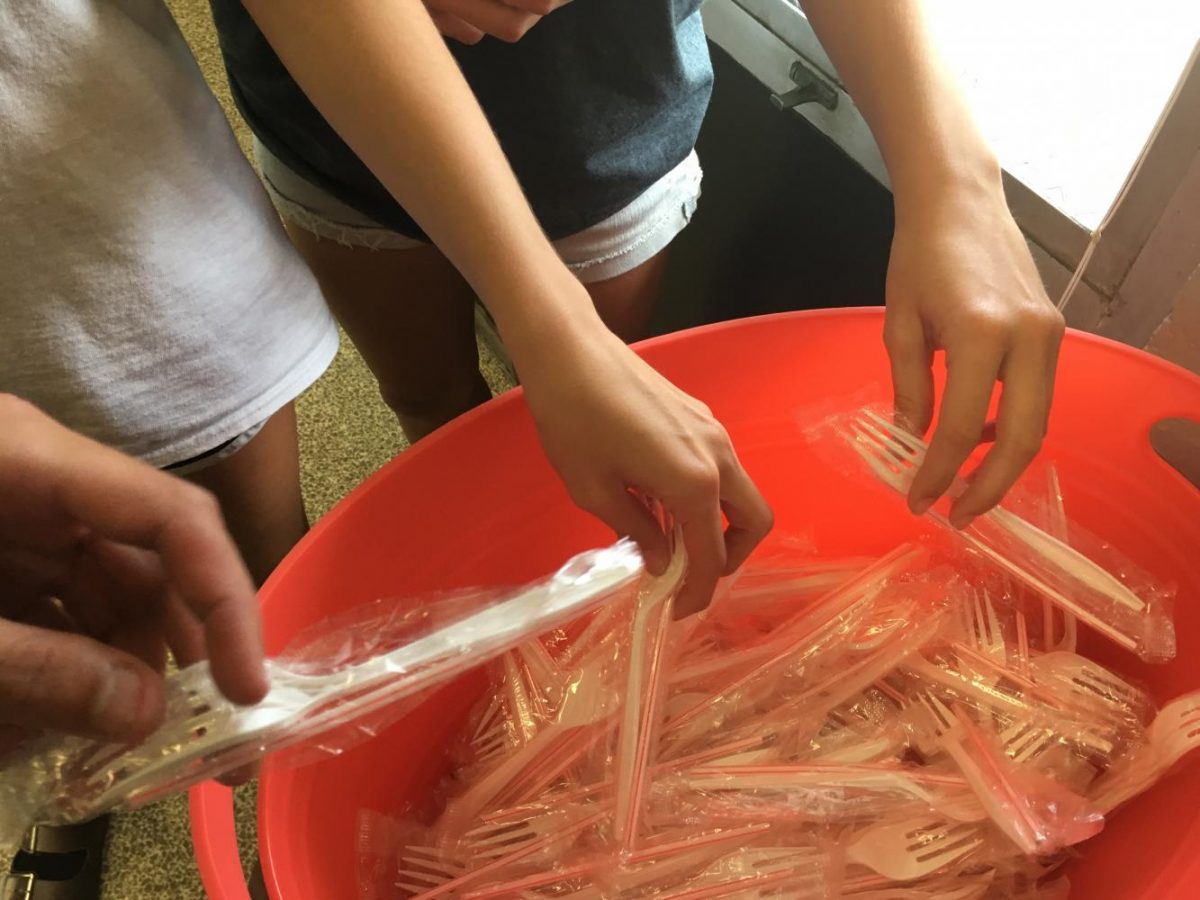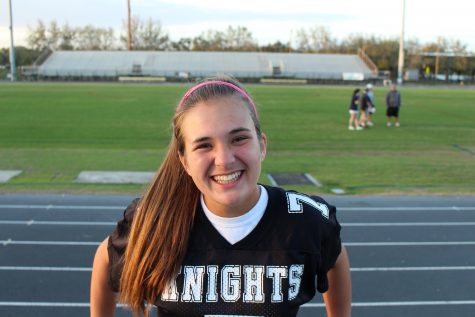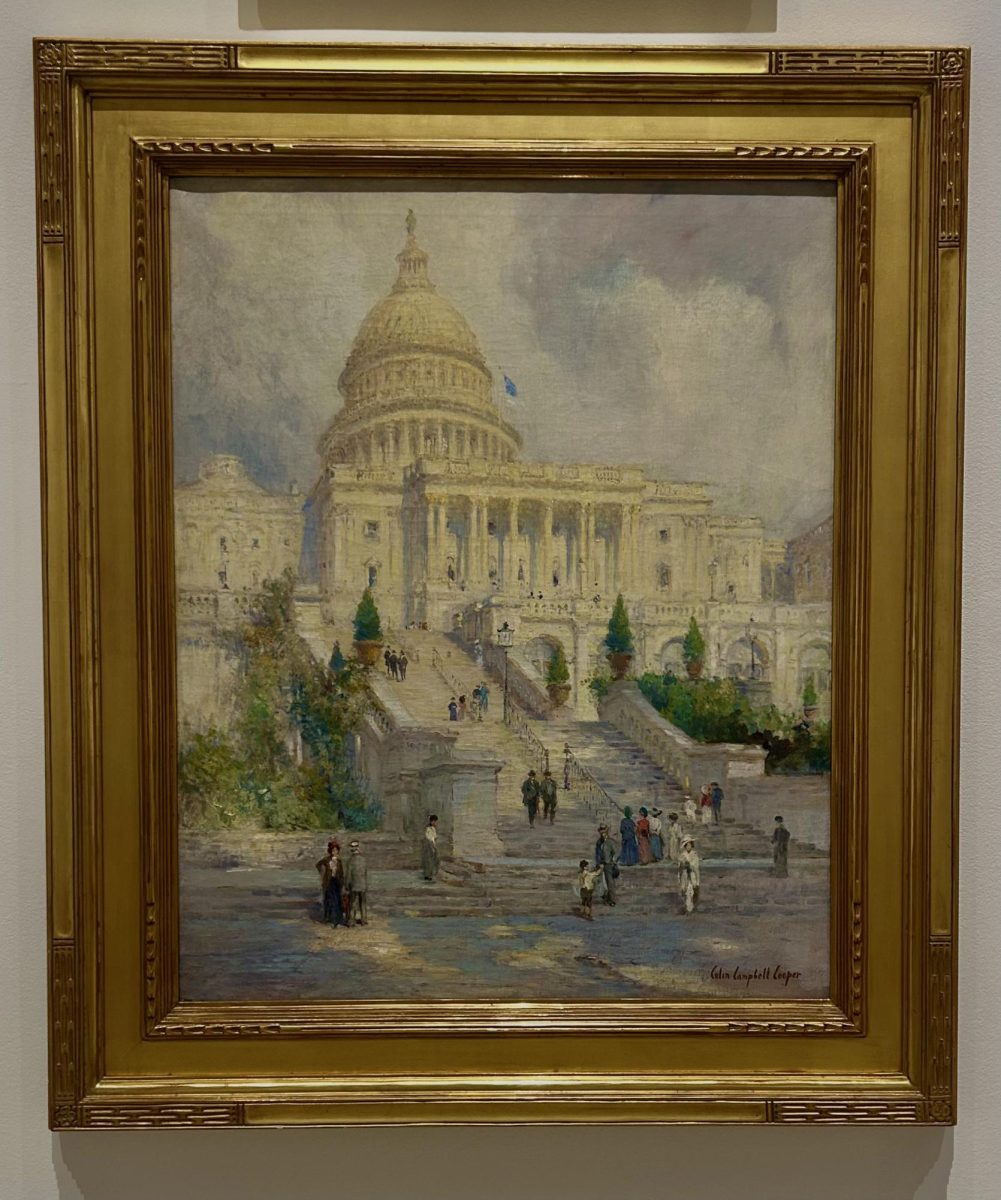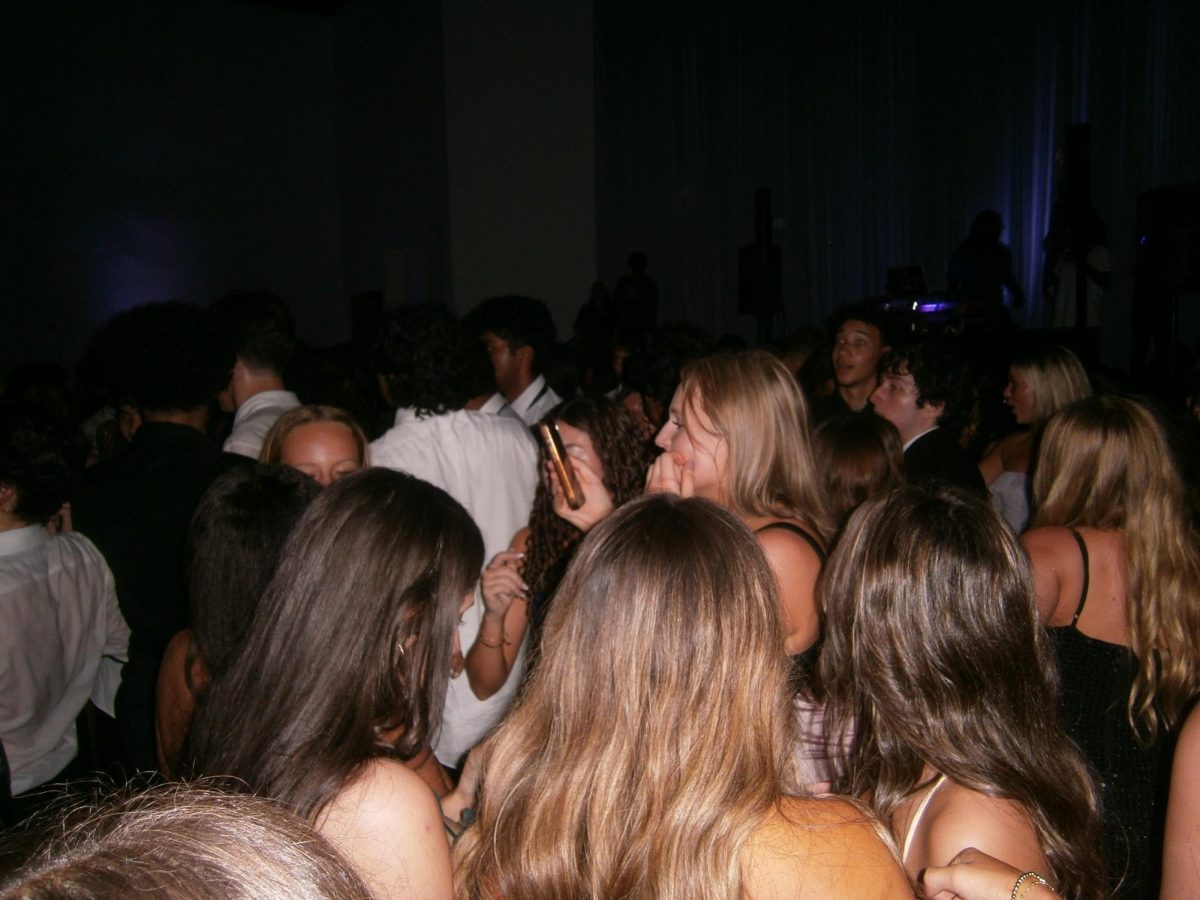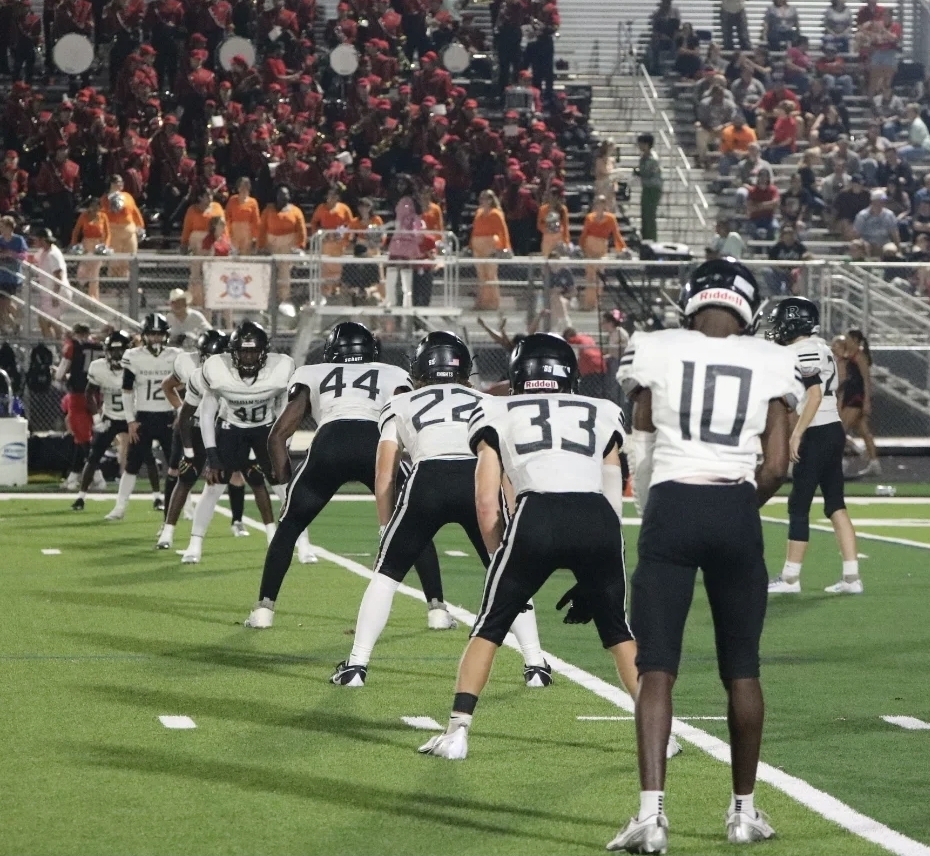The environment’s last straw
Photo Macy McClintock
Students grab a fork and straw at lunch. These plastic packages are the only way to get a fork or straw from the lunchroom.
October 4, 2017
According to the National Park Service, 500 million straws are used in America every day. That’s enough straws to circle the earth two and a half times. And the worst part? They can’t be recycled because they contain BPA. Sure, straws are entertaining for the 20 minutes that it takes to slurp down a drink, but after that, all they do is hurt the earth.
As a warning before you continue reading, I am incredibly passionate about saving the earth and believe that plastic straws are one thing that can be eliminated easily but currently cause so much harm. If I am handed a straw at a restaurant, I immediately hand it back. And I make sure my friends do that too. Sure, I am slightly insane, but I can’t imagine thin slips of plastic being the downfall of this country.
I get the same comments all of the time, “one person isn’t going to make a difference when that many straws are used every day.”
Well that’s not necessarily true. People aren’t always aware of how many straws they use on a daily basis. If you go to Starbucks in the morning and order a Frappuccino, do you grab a straw to drink it? Or if you order a hot coffee, do you grab a plastic straw as a coffee stirrer? If you stop at a fast food restaurant and order a drink, do you ask for a straw? Smoothie shops, coffee shops, restaurants, ice cream stores, convenience stores. Straws are everywhere and Robinson is not helping this situation.
In the cafeteria, a student can grab a plastic package that contains a plastic fork and straw. No knife, no napkin. I guess if there’s something in your lunch you need to cut, just hope your straw is sharp enough. Most straws tend to be unused and thrown in the trash.
I completely understand that straws are needed for sanitary reasons because milk cartons and juice pouches are sold with school lunches, but most students just drink straight from the pouch or carton.
If the school purchased straws wrapped in paper and laid them out so students could take them only if needed, the school not only would help the environment, but save money by purchasing fewer straws as well.
That’s only a small change that could make a huge difference in our community.
Recently, Seattle passed a law banning plastic straws and utensils. All vendors that sell food or drink must offer compostable or recyclable options. The ban doesn’t officially take place until next January, but Seattle used one million less straws in the month of September alone. Maybe Tampa could be next.
Especially living so close to the water, we should want to support our environment more than ever. And we can. Eliminating plastic straws from our daily lives is an easy way to do just that.
Saving the environment sounds like a major task, but it can start with something as easy as refraining from a silly, plastic straw.
This is the last straw, Tampa. Let’s make a difference.

